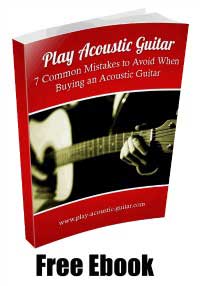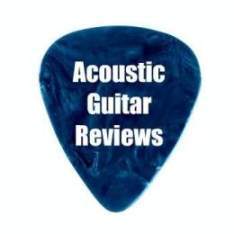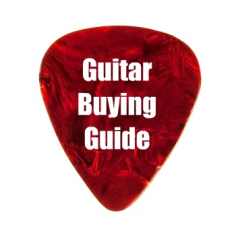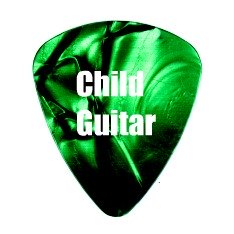|
Acoustic Guitar Tuner
There are slight differences between each type of acoustic guitar tuner. Chromatic tuners can tune all 12 notes of the scale where more basic models only tune the 6 notes of a 6-string guitar (E-A-D-G-B-E) A-440 Tuning Reference
The A-440 Tuning Reference is the widely-used tuning standard for modern instruments. The "A" in the title represents an A note, and 440 refers to the speed of the vibration that leads to a perfect A note. All sound is vibration, and the speed of these vibrations produces the pitch of the sound. Frequency (or vibration speed) is commonly referred to as Hertz, or abbreviated as hz. So when something vibrates at a speed of 440hz, it will produce a standard A note. This reference tone can be used to tune your acoustic instrument. Tightening one's acoustic guitar strings will cause them to vibrate faster and produce a higher tone. Loosening them will cause them to vibrate slower and produce a a lower tone. The concept is to match your A string perfectly to the A440 reference tone. Chromatic TunersChromatic tuners, such as the first one below, allows all the 12 notes of the scale to be tuned. Some electronic tuners offer additional features, such as adjustable pitch calibration. A chromatic tuner allows for Drop D tuning, which means that the Low E string is tuned down to a D note. Only one string (low E) is changed from standard E-A-D-G-B-E tuning. It has become popular in modern rock and metal styles because it lets you play power-chords more easily.
Quit wasting valuable jamming and gig time trying to get in tune!
Buy yourself an acoustic guitar tuner. The one I recommend is the chromatic tuner below. It's inexpensive, durable, easy-to-use and quickly does the job.
Korg CA-40 Electronic Chromatic Tuner, Cost ~$15
The most basic tuners only detect and display the tuning for a small number of pitches, such as the six pitches used in the standard tuning of an acoustic guitar (E-A-D-G-B-E). Below is a basic acoustic guitar tuner model.
Korg GA-1 Guitar Tuner, Cost ~$13
How to Use an Acoustic Guitar TunerTurn the tuner on and place it as close as possible to the sound hole. Play each open string in turn and tune the string until the indicator shows the string is in tune (needle indicator is on "0").
Remember, do not overtighten your acoustic guitar strings. And always end in a "tightening motion" with your tuning peg. Never end with a "loosening motion" on your tuning peg, as this could result in slack remaining on the string and the guitar can quickly become out of tune. If you over-tighten (too sharp), loosen tuning peg until the red light indicates that the string is flat. Then, retighten slowly until the string is exactly in-tune.
Prefer to tune your guitar to itself? Review a video of the comparative tuning method.
Other Tuning ResourcesAcoustic Guitar Tuner - Tuner ReviewsAcoustic Guitar Tuning - Standard versus Comparative Tuning Tuning Acoustic Guitar - Tuning to a Keyboard Tune Acoustic Guitar Online - Online Guitar Tuner TABLE OF CONTENTS: Guitar Parts & AccessoriesAcoustic Guitar Amps| Acoustic Guitar Bridge| Acoustic Guitar Bridge Pins| Acoustic Guitar Case| Acoustic Guitar Flight Case| Acoustic Guitar Kits| Acoustic Guitar Microphone| Acoustic Guitar Neck| Guitar Pics| Guitar Pickguards| Acoustic Guitar Pickups| Acoustic Guitar Saddle| Acoustic Guitar Stand| Acoustic Guitar Strap| Acoustic Guitar Strings| Acoustic Guitar Tuner| Acoustic Guitar TuningReturn to Acoustic Guitar Tuning Return to Best Acoustic Guitars HOME
|












